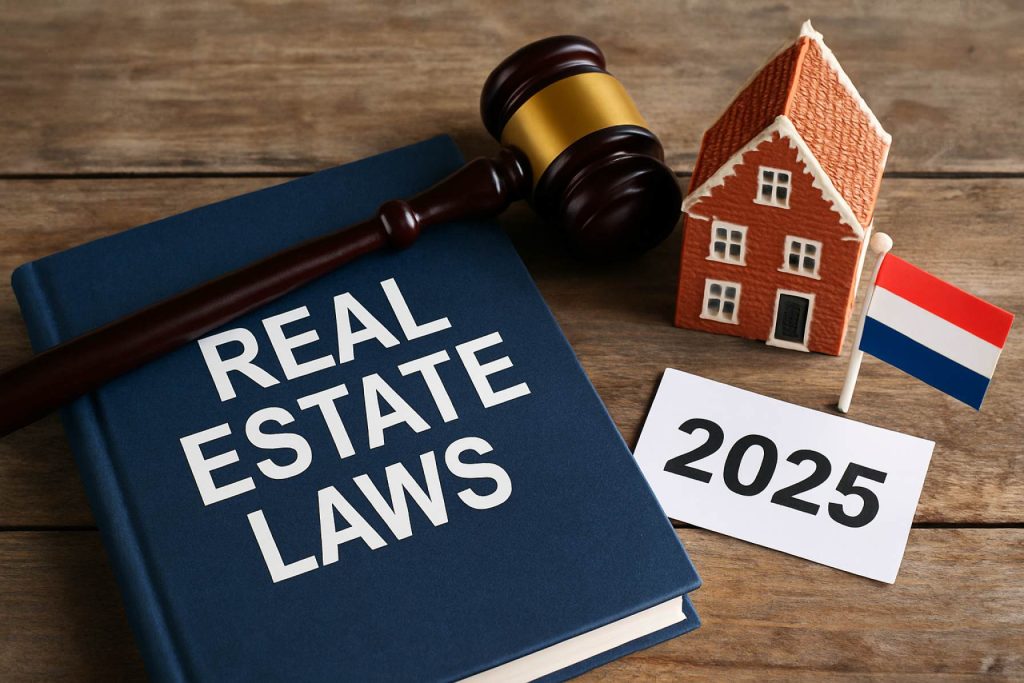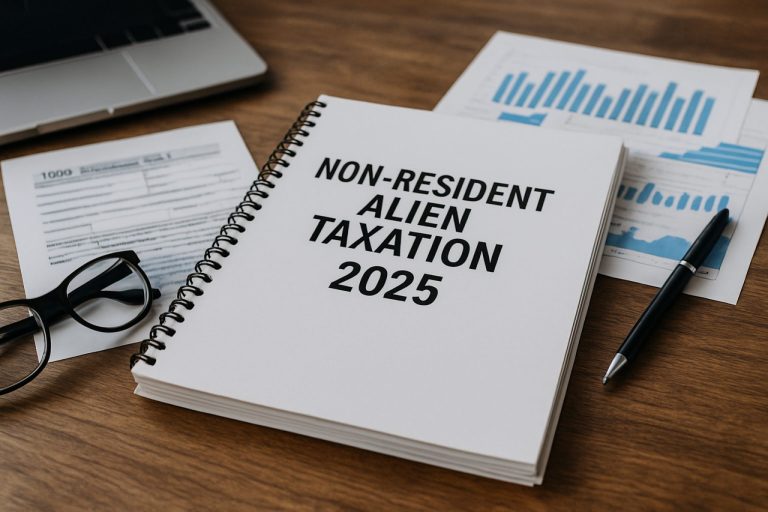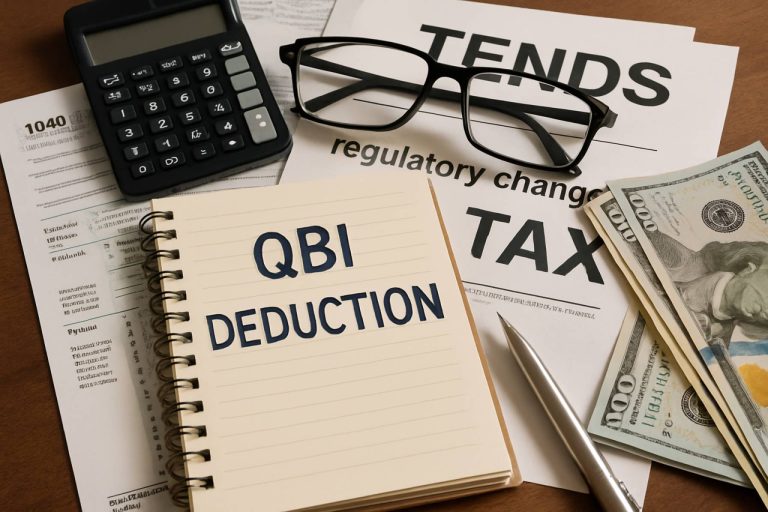
Table of Contents
- Introduction: Why 2025 Is a Pivotal Year for Dutch Real Estate
- Key Regulatory Bodies and Their Roles
- Recent Legislative Changes: What’s New in 2025?
- Property Ownership Rules: Residents vs. Non-Residents
- Taxation and Compliance: Essential Updates for Buyers and Sellers
- Rental Market Regulations: Caps, Protections, and Tenant Rights
- Sustainability and Environmental Compliance Requirements
- Statistical Overview: Market Trends and Regulatory Impact
- Navigating Legal Risks: Common Pitfalls and Compliance Strategies
- Future Outlook: Predicted Regulatory Shifts Through 2030
- Sources & References
Introduction: Why 2025 Is a Pivotal Year for Dutch Real Estate
The year 2025 marks a significant turning point for real estate regulations in the Netherlands, driven by a confluence of legislative reforms, market pressures, and societal demands. Over the past decade, the Dutch housing market has experienced acute shortages, especially in urban centers, prompting both national and municipal authorities to respond with tightened regulatory frameworks. In 2025, several key regulatory changes will either come into effect or reach critical evaluation stages, reshaping the operational landscape for developers, investors, landlords, and tenants.
One of the most notable regulatory milestones is the continued roll-out of the Wet betaalbare huur (Affordable Rent Act), which aims to expand rent controls to a larger segment of the private rental market. This legislative shift, championed by the Dutch government, targets mid-segment rental properties, capping rents and introducing stricter quality standards to improve affordability and living conditions. The new law is expected to directly impact over 300,000 rental homes, curbing excessive rent increases and enhancing tenant protections Rijksoverheid.
In parallel, sustainability requirements are tightening. The government’s climate agenda mandates that all office buildings achieve at least energy label C by 2025. Non-compliance can result in fines or functional closure of non-conforming buildings, making energy upgrades and green retrofits an urgent priority for property owners Rijksdienst voor Ondernemend Nederland (RVO). These measures reflect the broader European Union Green Deal targets, with the Netherlands as an early adopter among member states.
Additionally, 2025 will see the review of the Omgevingswet (Environment and Planning Act), a sweeping reform intended to simplify spatial planning and permitting. After its delayed implementation, stakeholders are closely monitoring its impact on housing supply and urban development processes Rijksoverheid.
These regulatory developments emerge against a backdrop of persistent housing demand: Statistics Netherlands projects a need for 900,000 new homes by 2030 to address shortages Centraal Bureau voor de Statistiek (CBS). As 2025 unfolds, the convergence of stricter rent controls, sustainability mandates, and planning reforms will test the adaptability of market participants and shape the Dutch real estate sector’s trajectory for years to come.
Key Regulatory Bodies and Their Roles
The regulatory framework governing real estate in the Netherlands is characterized by a robust system of oversight, involving multiple authorities at national and municipal levels. Each body plays a distinct role in ensuring compliance, transparency, and market stability. Understanding the functions of these key regulatory institutions is crucial for navigating the Dutch real estate landscape in 2025 and beyond.
-
Ministry of the Interior and Kingdom Relations (BZK):
The Ministry of the Interior and Kingdom Relations (BZK) is responsible for the overarching policy framework concerning housing, urban development, and spatial planning. In recent years, BZK has been instrumental in drafting and implementing significant legislative reforms, such as the Environment and Planning Act (Omgevingswet), which aims to streamline spatial planning laws and promote sustainable development. -
Netherlands Authority for the Financial Markets (AFM):
The Netherlands Authority for the Financial Markets oversees the conduct of financial service providers, including real estate agents, property investment funds, and mortgage brokers. The AFM sets compliance standards to protect consumers and promotes transparency in property transactions, particularly in the management of real estate investment vehicles and financial products linked to real estate. -
Financial Supervision Act (Wft):
Supervision of financial aspects of real estate transactions, such as lending and investment, falls under the Financial Supervision Act (Wft). The Wft is enforced by both the AFM and the Dutch Central Bank (DNB), ensuring that financial products and institutions comply with strict requirements regarding solvency, transparency, and customer protection. -
Municipal Authorities:
Local governments, or municipalities, exercise significant regulatory control over zoning, building permits, and urban planning. With the introduction of the Environment and Planning Act, municipalities are now tasked with integrating environmental, spatial, and construction regulations, aiming for greater efficiency and citizen involvement in decision-making processes. -
Land Registry (Kadaster):
The Netherlands Cadastre, Land Registry and Mapping Agency (Kadaster) maintains official records of property ownership, boundaries, and associated rights. Accurate registration by Kadaster is essential for legal certainty in real estate transactions and is mandated by law.
Looking ahead to 2025 and the subsequent years, these regulatory bodies are expected to enhance digitalization, improve data accessibility, and enforce stricter standards related to sustainability and transparency within the property sector. Ongoing legislative updates and increased scrutiny of market practices are likely as the Netherlands continues to address housing shortages, affordability, and climate objectives through regulatory measures.
Recent Legislative Changes: What’s New in 2025?
The Dutch real estate sector is undergoing significant regulatory evolution in 2025, with the government enacting and proposing several legislative changes to address housing shortages, affordability, and market transparency. One of the most notable developments is the implementation of the Affordable Rent Act (Wet Betaalbare Huur), which took effect on 1 July 2024. This law extends rent control to a larger portion of the private rental sector, imposing a points-based cap on mid-market rental homes (usually up to €1,100 per month), and granting municipalities greater enforcement powers. By 2025, approximately 300,000 additional rental properties are subject to regulated rents, aiming to curb excessive rent increases and improve housing accessibility for middle-income tenants (Rijksoverheid).
Another major change is the tightening of buy-to-let restrictions through the Opkoopbescherming (purchase protection) policy, enabling municipalities to ban investors from buying up affordable homes and renting them out in designated areas. This measure, expanded in 2024 and enforced widely in 2025, aims to prioritize owner-occupiers and stabilize local housing markets (Rijksoverheid). Local governments in Amsterdam, Rotterdam, Utrecht, and The Hague are actively applying these restrictions to new property transactions.
On the sustainability front, energy efficiency requirements for buildings continue to tighten. As of 2025, all newly constructed residential buildings must meet stricter BENG (Bijna Energie Neutraal Gebouw) standards, contributing to the Netherlands’ climate goals. Non-residential buildings face increasing obligations for energy label improvements, with the government enforcing mandatory upgrades to at least Energy Label C for office spaces since 2023, and further tightening anticipated (Rijksdienst voor Ondernemend Nederland).
- Compliance and Enforcement: The Human Environment and Transport Inspectorate (ILT) and local authorities are increasing inspections and penalties for non-compliance with rental regulations and energy standards (ILT).
- Key Statistics: In 2024, the regulated rental stock expanded by 22%, and initial enforcement data shows over 1,000 violations identified in the first six months of the Affordable Rent Act (Rijksoverheid).
Outlook: The regulatory environment is expected to remain dynamic through 2025 and beyond, with ongoing debates about further expanding rent controls, incentivizing sustainable construction, and addressing rising interest rates’ impact on housing affordability. Stakeholders should anticipate increased compliance requirements, especially in rental and sustainability domains, as the government pursues its objectives of affordability, accessibility, and climate adaptation in the real estate market.
Property Ownership Rules: Residents vs. Non-Residents
The regulatory framework for property ownership in the Netherlands is characterized by its openness to both residents and non-residents, with evolving compliance and transparency requirements. As of 2025, there are no specific legal restrictions preventing non-residents from purchasing real estate, whether residential or commercial, in the Netherlands. Both individuals and legal entities—regardless of nationality—are permitted to acquire, own, and sell property. The registration of property transactions is mandatory and is administered by the Kadaster (Dutch Land Registry Office), ensuring that all ownership changes are publicly documented.
However, the Dutch government has responded to concerns about housing affordability and speculative investment, particularly in large urban centers, by enacting targeted regulations. Municipalities have gained powers under the Good Landlordship Act (Wet goed verhuurderschap) and the Municipal Purchase Protection Act (Opkoopbescherming). These laws enable local authorities to designate areas where buy-to-let investments are either restricted or subject to a licensing regime, primarily to protect the availability of owner-occupied homes. For example, in cities such as Amsterdam and Rotterdam, non-resident buyers may be required to occupy newly purchased properties themselves for a minimum period before renting them out.
Compliance with anti-money laundering (AML) and transparency requirements is stringent. Notaries, real estate agents, and financial institutions are obliged to verify the identity and funding sources of both resident and non-resident buyers under the Anti-Money Laundering and Anti-Terrorist Financing Act (Wwft). Furthermore, since 2022, the UBO Register—maintained by the Dutch Chamber of Commerce—requires disclosure of the ultimate beneficial owners of legal entities holding real estate, enhancing transparency in property transactions.
Recent statistics from the Statistics Netherlands show a slight increase in property sales during 2024, with non-resident participation stable but regionally concentrated in major cities and popular tourist areas. Looking ahead to the next few years, the Dutch government is expected to maintain its open approach to property ownership by non-residents while granting municipalities further regulatory tools to curb speculative investment and address housing shortages. Heightened compliance and reporting obligations, especially regarding AML and beneficial ownership, are likely to persist, reflecting both national and EU-level policy directions.
Taxation and Compliance: Essential Updates for Buyers and Sellers
The Dutch real estate sector is shaped by a robust legal and fiscal framework, with key developments in taxation and compliance set to impact buyers and sellers in 2025 and beyond. The Netherlands continues to emphasize transparency, anti-money laundering (AML) measures, and sustainable housing policy, affecting both domestic and international transactions.
Transfer Tax and VAT
One pivotal change in recent years is the differentiated real estate transfer tax (overdrachtsbelasting) rates. As of 2024, first-time homebuyers under 35 purchasing homes under €510,000 benefit from a 0% transfer tax, while other private buyers face the standard 2%. Investors and legal entities are subject to a higher 10.4% rate—a measure designed to cool speculative investment and promote owner-occupancy. These rates are expected to remain stable in 2025, pending further policy review (Belastingdienst).
Value-Added Tax (VAT) is generally not applicable to the purchase of existing properties, but new builds and commercial real estate transactions may incur 21% VAT, depending on specific use cases (Belastingdienst).
Anti-Money Laundering and Compliance
The Dutch government enforces strict AML protocols under the Wet ter voorkoming van witwassen en financieren van terrorisme (Wwft), requiring real estate agents, notaries, and financial institutions to perform customer due diligence and report unusual transactions. The De Nederlandsche Bank and FIU-Netherlands oversee compliance, with increased scrutiny on foreign buyers and entities. Notably, the UBO (Ultimate Beneficial Owner) register, implemented in 2020, will see enhanced enforcement in 2025, compelling transparency in property ownership structures (KVK (Netherlands Chamber of Commerce)).
Energy Efficiency Obligations
Sustainability is a regulatory priority. As of 2023, offices must have at least an energy label C; non-compliant buildings risk closure or fines. These standards are expected to tighten, with stricter requirements for residential properties on the legislative agenda for 2025 (Rijksdienst voor Ondernemend Nederland).
Outlook
With the 2025 focus on affordability, transparency, and sustainability, buyers and sellers must stay vigilant on evolving tax policies, enhanced compliance obligations, and green regulations. Continued digitalization of property transactions and stricter enforcement are anticipated, reinforcing the Netherlands’ reputation for a well-regulated, transparent real estate market.
Rental Market Regulations: Caps, Protections, and Tenant Rights
The Dutch rental market is characterized by robust regulations aimed at balancing tenant protections with landlord rights. As of 2025, the legal framework is shaped by recent reforms targeting affordability, transparency, and accessibility, particularly in response to ongoing housing shortages in major cities.
A major development is the introduction of a national rent cap system that extends price regulation into segments of the private rental sector that were previously liberalized. Under the new rules, effective from 2024, rents for homes scoring up to 187 points on the woningwaarderingsstelsel (house valuation system) are subject to maximum allowable rents. This extends government control to a broader swathe of mid-market rentals, aiming to curb excessive rent increases and improve affordability for middle-income households. Landlords face penalties for charging above the permitted caps, enforced by municipal authorities and oversight agencies.
Tenant protections remain a cornerstone of Dutch housing policy. The Dutch Civil Code (Burgerlijk Wetboek, Book 7) enshrines security of tenure, prohibiting arbitrary eviction and stipulating strict notice periods. Temporary rental contracts, permitted since 2016, are now more tightly regulated: recent amendments limit landlords’ ability to issue short-term leases, promoting longer-term stability for tenants. Additionally, as of 2024, tenants are entitled to more transparent disclosure regarding service charges, rent composition, and property maintenance obligations.
Statistically, the regulated rental sector (social housing) comprises about 2.3 million dwellings, accounting for roughly 60% of the total rental stock, while the private sector—now increasingly regulated—makes up the remaining 40% (Centraal Bureau voor de Statistiek). Rent increases in regulated sectors are capped annually, with the 2025 ceiling set at inflation plus a modest margin, in line with government directives.
Compliance is enforced by local municipalities, the Human Environment and Transport Inspectorate (ILT), and tenant advocacy organizations. These bodies investigate complaints, impose fines, and can mandate rent reductions or restitution for overcharged tenants.
Looking ahead, the Dutch government is expected to maintain and refine these regulatory measures, with ongoing debate about the balance between market incentives for landlords and the protection of tenant rights. Enhanced enforcement tools and further expansion of rent controls are under legislative consideration, reflecting a commitment to tackling housing affordability and security for years to come.
Sustainability and Environmental Compliance Requirements
Sustainability and environmental compliance have become central pillars in Dutch real estate regulation, reflecting the Netherlands’ ambitious climate goals and EU directives. As of 2025, property owners, developers, and investors must navigate a tightening framework of laws designed to reduce carbon emissions, improve energy efficiency, and promote circular construction.
A cornerstone of current regulation is the Energy Performance of Buildings Directive (EPBD), implemented in Dutch law through the Bouwbesluit 2012 (Building Decree 2012) and subsequent amendments. Since January 2023, all office buildings larger than 100 m² must have at least an energy label C (Rijksoverheid). Non-compliance may result in closure or fines. From 2030, the minimum requirement will rise to energy label A, indicating a stricter trajectory in the coming years.
The Environment and Planning Act (Omgevingswet), coming into full effect in 2024, further streamlines and strengthens environmental permitting. The new act integrates spatial planning, environmental protection, and building regulations, emphasizing sustainable urban development and the reduction of environmental impact throughout a building’s lifecycle (Government of the Netherlands).
Circularity requirements are also being phased in. The Material Passport—a digital registry of construction materials—will become mandatory for new government buildings and is expected to extend to broader real estate segments. This measure supports the national ambition to achieve a fully circular construction economy by 2050 (Rijksoverheid).
- As of 2023, an estimated 55% of Dutch office stock was compliant with energy label C or better (Netherlands Enterprise Agency), with a marked increase in retrofitting activity projected through 2025.
- New construction permits routinely require climate adaptation measures, such as green roofing and water retention systems, in response to increased flooding risk (Helpdesk Water).
- Municipalities are increasingly enforcing local sustainability targets, often exceeding national minimums, especially in cities like Amsterdam and Rotterdam.
Looking ahead, the regulatory outlook is one of continued escalation. The government’s Climate Agreement and EU Green Deal commitments are expected to drive stricter standards, more rigorous monitoring, and broader application of ESG criteria for all real estate assets. Non-compliance risks will rise, making proactive adaptation essential for market participants (Government of the Netherlands).
Statistical Overview: Market Trends and Regulatory Impact
The Dutch real estate market has experienced significant regulatory changes in recent years, directly impacting market trends and shaping the sector’s outlook for 2025 and beyond. In response to persistent housing shortages, price inflation, and affordability concerns, the government has enacted a series of laws aimed at promoting fair access to housing and curbing speculative investment.
A pivotal event was the introduction of the Affordable Rent Act (Wet betaalbare huur), which is scheduled to come into force on 1 July 2024. This act extends rent regulation to mid-segment rental properties, which previously fell outside strict rent control, covering approximately 300,000 additional homes. Under this regime, landlords must adhere to maximum rental prices based on a point system that assesses property quality, size, and location. Authorities anticipate this will help stabilize rents and enhance affordability for middle-income tenants (Rijksoverheid).
Compliance obligations for landlords have increased substantially. Municipalities now have enhanced powers to enforce rental regulations and levy fines for violations. Additionally, the 2022 Good Landlordship Act (Wet goed verhuurderschap) remains pivotal, obliging landlords to adhere to anti-discrimination practices, maintenance standards, and transparent rental agreements (Rijksoverheid).
Statistical data underscores the ongoing regulatory impact. In 2023, the Netherlands had approximately 8 million dwellings, with around 42% rented and 58% owner-occupied. Of rentals, over 70% were in the social sector, and about 30% in the private sector (Centraal Bureau voor de Statistiek). Despite government interventions, average house prices increased by 5.8% year-on-year in Q4 2023, while rental growth in the private sector slowed to 2.5%, reflecting the cooling effect of regulatory tightening (Centraal Bureau voor de Statistiek).
Looking ahead, the Dutch government aims to build 900,000 new homes by 2030, with one-third designated as affordable or social housing. Regulatory focus is expected to remain on enhancing transparency, tenant protection, and the sustainability of housing stock. Market participants must closely monitor evolving requirements to remain compliant as the regulatory landscape continues to tighten, especially with further reforms anticipated in the coming years (Government of the Netherlands).
Navigating Legal Risks: Common Pitfalls and Compliance Strategies
Navigating the regulatory landscape for real estate in the Netherlands requires a comprehensive understanding of evolving legal frameworks, compliance requirements, and enforcement trends. In 2025, several key developments and persistent challenges shape the environment for investors, developers, and property managers.
Common Legal Pitfalls
- Non-compliance with zoning and spatial planning laws: Local municipalities strictly enforce the Ministry of the Interior and Kingdom Relations zoning plans (“bestemmingsplannen”), and unauthorized use or conversion of properties can result in fines or forced remediation.
- Inadequate adherence to environmental regulations: The Dutch Environment and Planning Act (Omgevingswet), effective from 2024, consolidates dozens of laws into a single system, heightening due diligence requirements for soil, water, and noise standards in real estate projects (Ministry of Infrastructure and Water Management).
- Failure in tenant protection compliance: Dutch tenancy law is highly protective of tenants. Mistakes in lease drafting or rent control calculations, especially under the new “regulated middle segment” rent cap effective 2024, can lead to restitution claims or forced rent reductions (Government of the Netherlands).
- Anti-money laundering (AML) lapses: Real estate professionals must comply with the Dutch Anti-Money Laundering and Anti-Terrorist Financing Act (Wwft). Insufficient client vetting or transaction monitoring is a leading cause of regulatory penalties (De Nederlandsche Bank).
Compliance Strategies for 2025 and Beyond
- Integrate digital compliance tools: Leverage digital platforms to monitor legislative changes and automate reporting for zoning, environmental, and AML compliance.
- Conduct enhanced due diligence: Regularly update risk assessments for new projects, focusing on environmental impact and the new requirements of the Omgevingswet.
- Stay current on tenancy law reforms: Closely track updates from the Rijksoverheid to ensure accurate lease agreements and rent-setting procedures.
- Engage legal counsel proactively: Consult with specialist law firms for contract drafting, dispute resolution, and regulatory filings, especially in areas impacted by recent or upcoming reforms.
While the Dutch real estate sector remains attractive, stricter enforcement and evolving legal standards mean that robust compliance frameworks are essential for mitigating legal risks and maintaining market access in 2025 and the years ahead.
Future Outlook: Predicted Regulatory Shifts Through 2030
The landscape of real estate regulations in the Netherlands is expected to undergo significant transformation through 2030, as policymakers respond to evolving market pressures, sustainability imperatives, and social housing needs. As of 2025, several regulatory initiatives and anticipated reforms are shaping the future outlook for property investors, developers, and tenants.
A primary area of focus is housing affordability. The Dutch government, via the Government of the Netherlands, has set ambitious targets to expand the housing stock and curb excessive rent increases, particularly in the mid-market segment. The proposed “Affordable Rent Act” (Betaalbare Huurwet), expected to take effect in 2025, will cap rents for a broader range of properties, extending rental points system coverage to homes with rents up to €1,100 per month. This intervention aims to prevent rent hikes and ensure greater accessibility for middle-income earners.
Sustainability is another major driver of regulatory change. The Dutch Climate Agreement mandates that all homes must be natural gas-free by 2050, prompting incremental requirements for energy performance in both new and existing developments. From 2025, stricter energy label requirements for rental properties are expected to be enforced, aligning with the obligations under the Energy Performance of Buildings Directive (EPBD). Landlords will need to upgrade properties to at least energy label D for new leases, with further tightening anticipated by 2030, supporting the country’s net-zero objectives (Netherlands Enterprise Agency).
Urban planning and land use policies are also evolving. The Environment and Planning Act (Omgevingswet), effective as of January 2024, consolidates dozens of existing spatial, environmental, and building regulations into a single framework. By 2030, this act is expected to streamline permitting processes and enable municipalities to more flexibly address local housing needs, mixed-use development, and climate adaptation measures (Government of the Netherlands).
Compliance burdens for market players are likely to increase, especially concerning anti-money laundering (AML) and transparency in property ownership. The implementation of the UBO (Ultimate Beneficial Owner) register and ongoing EU directives are tightening due diligence requirements for real estate transactions (Netherlands Chamber of Commerce). This trend is expected to persist, with further safeguards against financial crime anticipated before 2030.
Collectively, these regulatory shifts signal a future Dutch real estate market characterized by greater oversight, a strong emphasis on affordability and sustainability, and enhanced compliance expectations. Stakeholders should anticipate ongoing regulatory updates and proactive enforcement as the Netherlands seeks to balance economic growth with social and environmental objectives.



